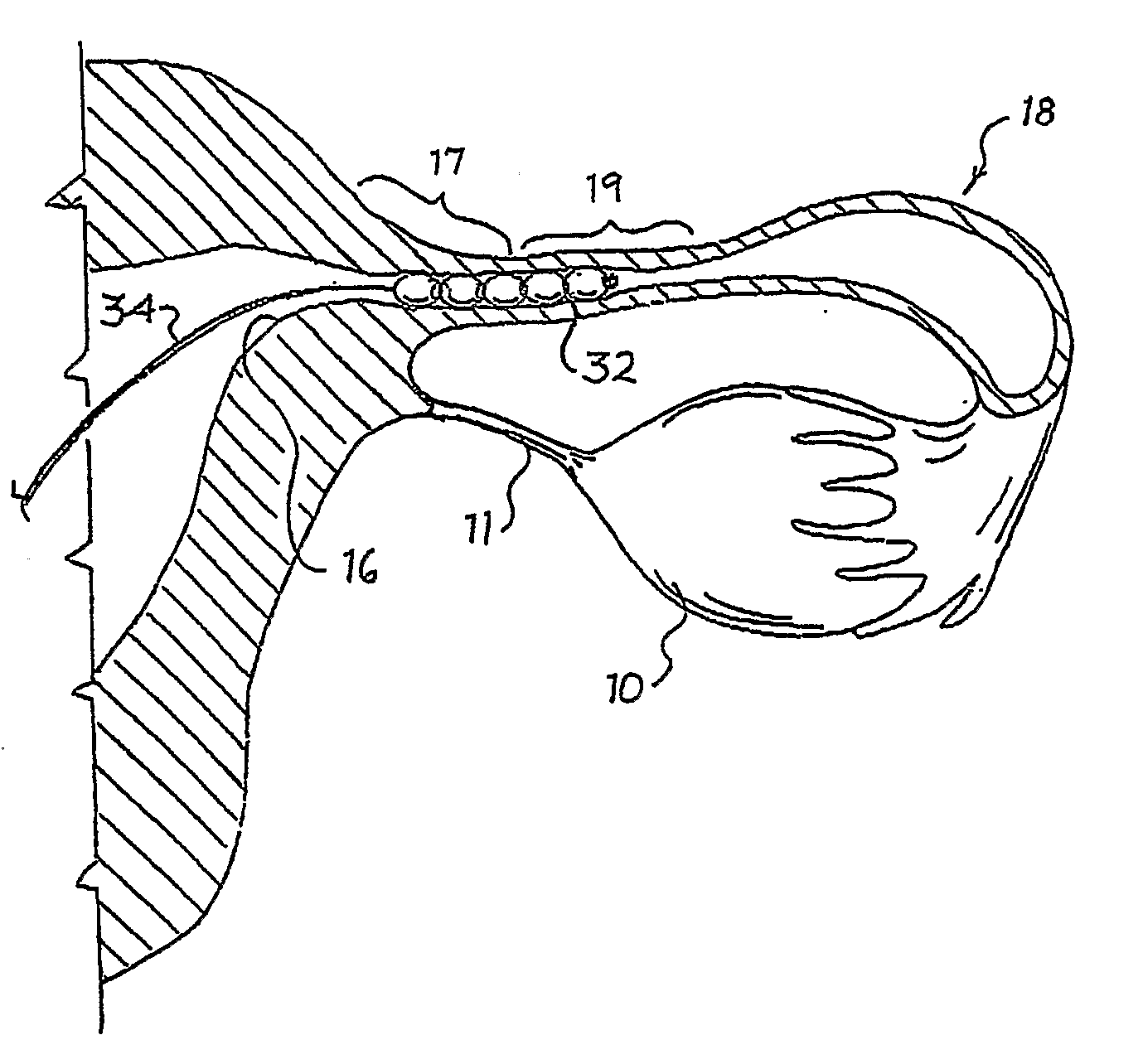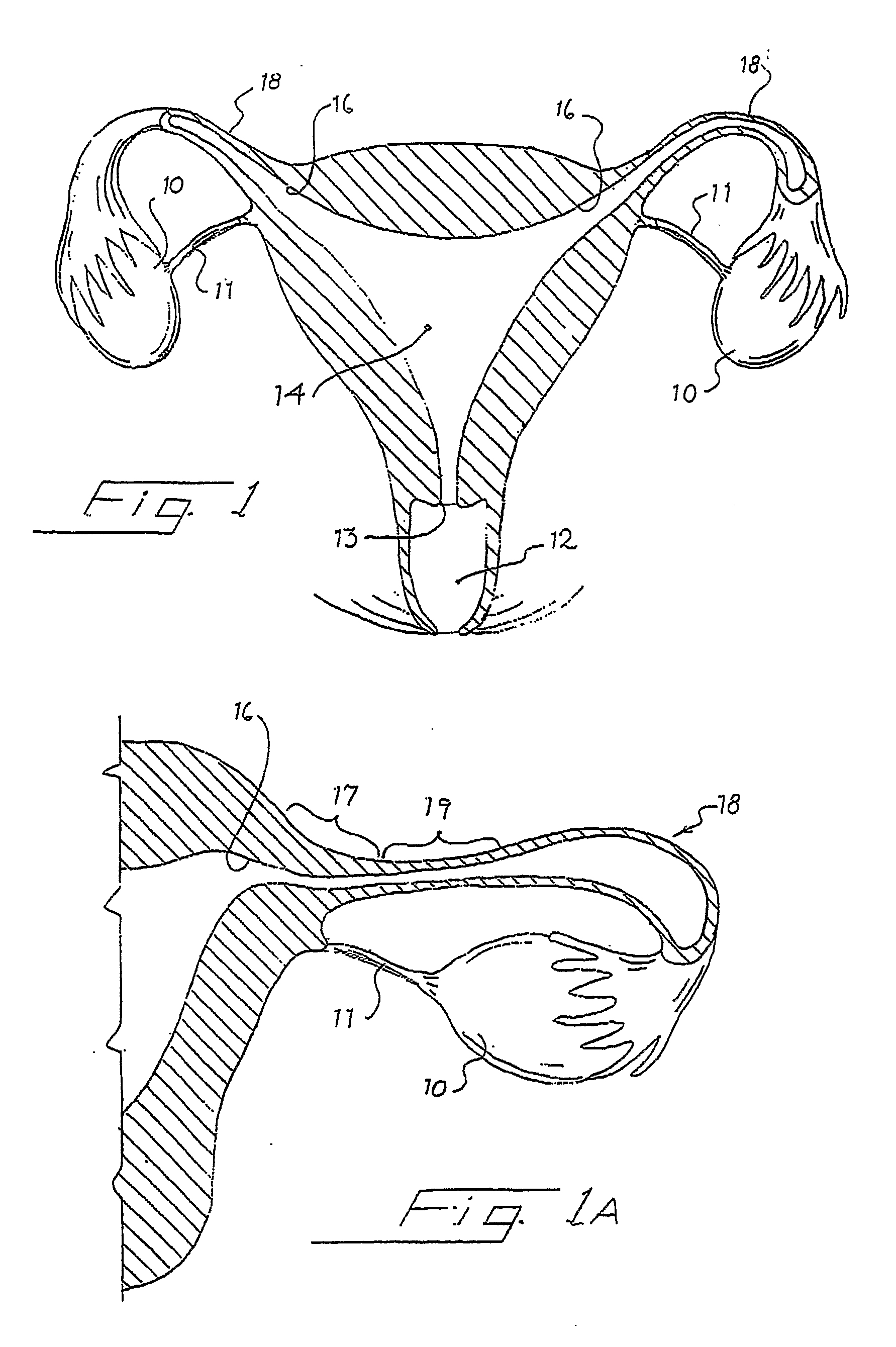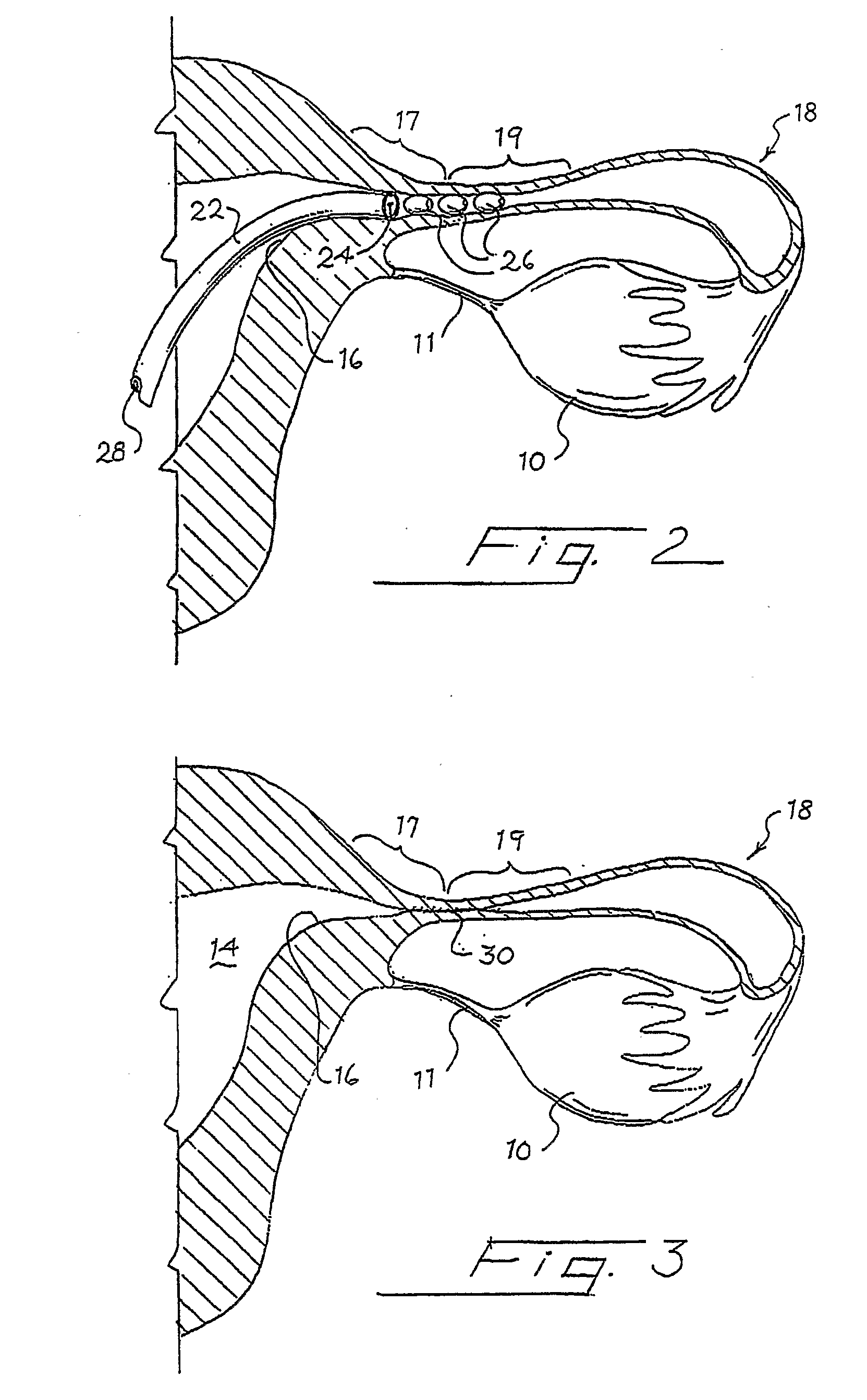Occlusion of Fallopian Tubes
a fallopian tube and occlusion technology, applied in the field of occlusion of fallopian tubes, can solve the problems of inability to meet the needs of patients, inability to perform a viable option, and high cost of procedures, and achieve the effect of facilitating the introduction and subsequent removal of beads
- Summary
- Abstract
- Description
- Claims
- Application Information
AI Technical Summary
Benefits of technology
Problems solved by technology
Method used
Image
Examples
example 1
Preparation of AgNO3 Bearing Beads
[0055]A. Preparation of Coating Solutions.
[0056]Coating Solution A was prepared by dissolving about 1 gram of silver nitrate in about 4 milliliters of water and adding thereto a solution of about 0.4 grams of polyvinylpyrrolidone (K-120) in about 4 milliliters of water.
[0057]Coating Solution B was prepared by adding about 4 milliliters of 70% denatured ethanol to about 8 milliliters of Coating Solution A.
[0058]B. Coating of Beads
[0059](i) Polypropylene beads having a diameter of about 3 millimeters and perforated polystyrene beads having a diameter of about 5 millimeters were soaked in Coating Solution A for about 2 minutes, removed from the coating solution, and were dried at ambient room temperature for about 30 minutes. The perforated polystyrene beads had single, substantially cylindrical through perforation having a diameter of about 1 millimeter in each bead.
[0060](ii) Polyethylene and polystyrene beads as described in (i) above were soaked in...
example 2
Tissue Necrosis With AgNO3 Bearing Beads
[0065]Silver nitrate bearing beads prepared in Example 1 were placed on the surface of beef muscle tissue (fillet mignon). Beads without a silver nitrate coating were also placed on the tissue as negative controls, as was a crystal of pure silver nitrate (about 1 mm diameter by 3 mm length; as a positive control).
[0066]The surface of the tissue under each bead was observed at about 5 minute intervals for a total of about 15 to about 20 minutes. The degree of necrosis of the tissue under each bead was noted at each observation. The degree of necrosis was rated as follows:
slight visible pitting of the tissue surface (+); moderate pitting of tissue surface with slight blackening of the tissue (++); significant pitting with moderate blackening of the tissue (+++); severe pitting with complete blackening of the tissue (++++); severe pitting with complete blackening of the tissue, spreading beyond the point of contact (+++++); and no observed necros...
PUM
 Login to View More
Login to View More Abstract
Description
Claims
Application Information
 Login to View More
Login to View More - R&D
- Intellectual Property
- Life Sciences
- Materials
- Tech Scout
- Unparalleled Data Quality
- Higher Quality Content
- 60% Fewer Hallucinations
Browse by: Latest US Patents, China's latest patents, Technical Efficacy Thesaurus, Application Domain, Technology Topic, Popular Technical Reports.
© 2025 PatSnap. All rights reserved.Legal|Privacy policy|Modern Slavery Act Transparency Statement|Sitemap|About US| Contact US: help@patsnap.com



